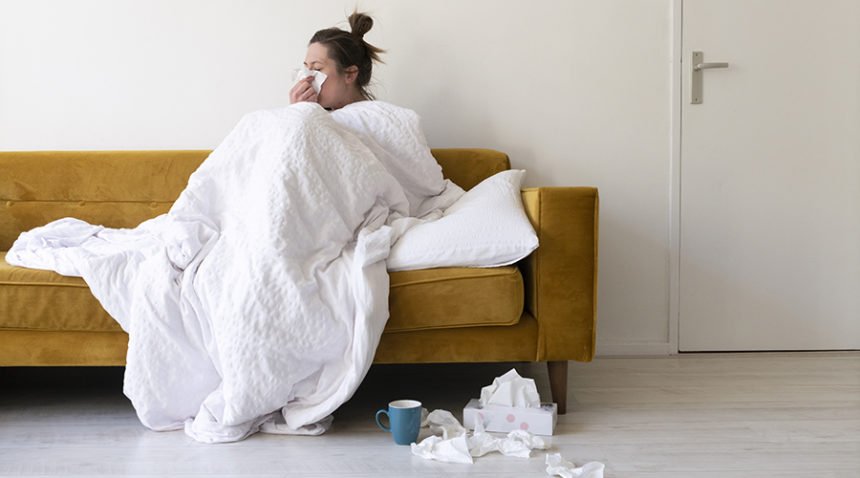We’re about nine months into the coronavirus disease 2019 (COVID-19) pandemic, and research about the virus has progressed at an unprecedented pace. While what we know about the virus continues to evolve, scientists have learned enough to set some important COVID-19 safety guidelines on how you can protect yourself and your loved ones.
We asked Emily Sickbert-Bennett, PhD, director of UNC Medical Center Infection Prevention, to answer common questions about the science behind these measures.
How does COVID-19 spread?
COVID-19 is spread from person to person mainly by droplets of respiratory secretions that are ejected when an infected person coughs, sneezes or talks.
“It has definitely become clear over the last number of months that the main route of spread is through droplets from one sick person to somebody else who’s susceptible,” Dr. Sickbert-Bennett says.
Early on in the pandemic, the recommendations on how to stay safe also included cleaning surfaces regularly. While it’s still very important to disinfect high-touch surfaces to prevent the spread of germs, including those that cause the dreaded stomach bug and influenza, it turns out surface transmission is not a common way to get COVID-19.
“Surface contamination is a secondary route of transmission that is less common and requires more steps to occur,” Dr. Sickbert-Bennett says.
For example, you would have to touch a surface that contains the respiratory secretions of someone with COVID-19 and then touch your mouth, nose or eyes. Frequent hand-washing is an effective way to prevent this route of transmission.
What about catching the virus from respiratory droplets suspended in the air, such as if you entered a room after a person with COVID-19 had left? Transmission this way is possible, but less common, especially the longer the infected droplets have been in the air.
“Based on all the data we have, contact tracing and cluster investigations, it’s clear that the majority of cases are spread by direct close contact from one sick person to one susceptible person,” Dr. Sickbert-Bennett says.
How do masks slow the spread of COVID-19?
Public health experts say the use of cloth face masks and coverings in public settings is a critical tool in the fight against COVID-19. Masks help people keep their germs to themselves and minimize the volume of respiratory droplets that can spread the virus.
Wearing a mask isn’t just about protecting others, it can help you, too. That’s because recent laboratory tests show masks block you from inhaling potential virus-containing droplets.
“Masks cover up people’s portal of entry and portal of exit of the virus, and anything that can block the chain of transmission is effective in preventing infection,” Dr. Sickbert-Bennett says.
Why is 6 feet considered the safe distance to stay apart?
Although the Centers for Disease Control and Prevention recommends people stay 6 feet or more apart—what we call “social distancing”—there is nothing magical about that number, Dr. Sickbert-Bennett says.
The science behind these guidelines is based on a century-old experiment that measured the distance respiratory droplets traveled.
“Six feet has been the recommended rule of thumb, but it’s clear that 3 feet is better than no feet, and 6 feet is better than 3 feet,” Dr. Sickbert-Bennett says. “The more distance and space you have, the safer it is.”
Keep in mind that although 6 feet is the recommended distance, there is no guarantee that even this distance is risk-free. Bottom line: The farther apart the better, and if you cannot avoid close contact, be sure to wear a mask.
Why is it safer to be outside than inside?
You have a lower risk of contracting COVID-19 being outdoors because fresh air dilutes the virus, and you have the space to move more freely and keep distance from others.
But, even if you are outdoors, wear a mask if you will be in close proximity to others. “If you’re talking to someone and you want to be a little closer and have a more intimate conversation, wearing your mask is the key prevention strategy,” Dr. Sickbert-Bennett says.
For the latest information on COVID-19, visit the CDC website and the UNC Health COVID-19 Resources page, and follow UNC Health on Twitter, Facebook, Instagram and YouTube.

